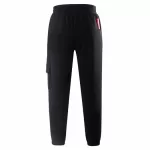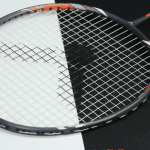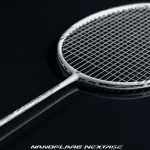
Badminton Racket YONEX NANOFLARE 1000TOUR Reviews
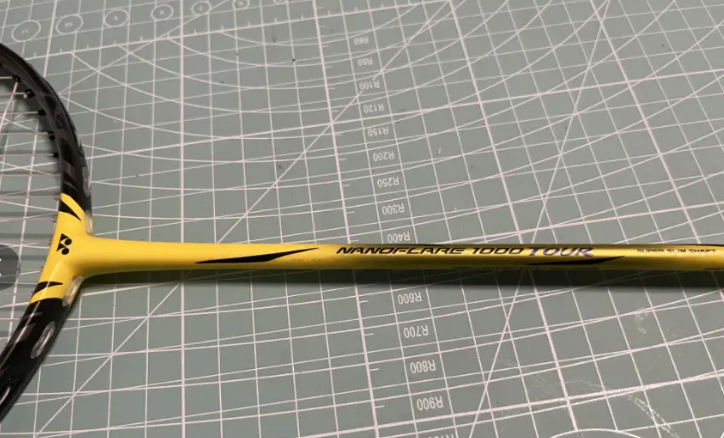
As I said last time, it’s still fun to play around with the TOUR.
Well, this time it’s the turn of the updated NF1000z, and once again I marvel that YY has found the right path to develop a low to mid-range product.
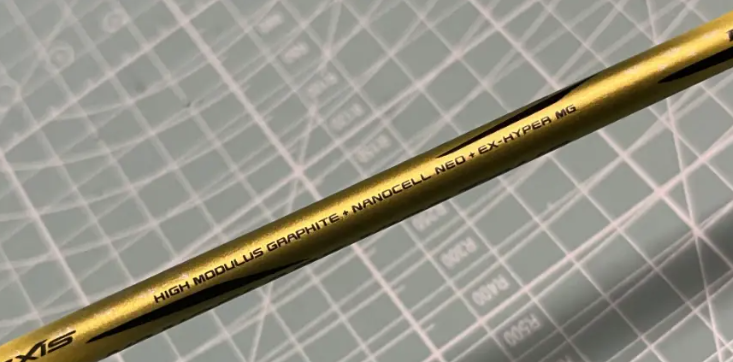
Parameters: 4UG5, de-bottomed, total weight in used condition 90.27g, balance point 297mm, center bar length 210mm, medium stiffness, wind breaker frame, 76-hole thread bed, full thread slot, 28lbs warranty, threaded 25-27lbs Takagami Steel Armor 5.
I think I can legitimately skip the exterior description part for the same reasons as before, after all, there’s basically no difference between the two except for the 7 o’clock orientation of the frame and the tour on the center stick. If I may say one more thing, the 1000Z itself is still quite a bit better looking than the 11P.
Put yourself in the shoes of a 1000Z tour is much more difficult to produce, after all, the 1000Z frame is more aggressive, the process is more difficult, while the tour is still all the features are retained, which is more to show the sincerity of the place – by the way, the author has recently put the tour of the examination focus on the “Sincerity” may be more meaningful in evaluating products of this class.

But in terms of how it feels in the hand, the tour is very much like the original, a little bit of head weight, a very exaggerated swing speed, and a 4U specification that makes it feel like sugar water just holding it in your hand. Of course, as you get used to it down the court, it’s going to be a little bit on the stiff side to a moderate degree, after all, the length of the center stick is where it’s at. However, the drive feel of the racquet is still very good, and more importantly, the 1000Z really doesn’t have too many of the problems of a small frame to hit, and the sweet spot and shot area felt very normal to me. After a few more round-trips to break it in, I’ll be able to take it down to the court to play against it.

Instead of the top-of-the-line one, the 1000t has the Rexis center stick, which is the same label as that NFFL from a few issues back. When actually playing against it, you can indeed feel that the elasticity is not as good and neutered, but in all fairness the current elasticity is also quite good, and you can get a sense of drive in the handling of overhand shots, and hit the long balls with no effort and a rebound feeling. As for the Sonic Blitz system that the frame was supposed to come with, I feel that it is still retained, as is the feel of the hold.
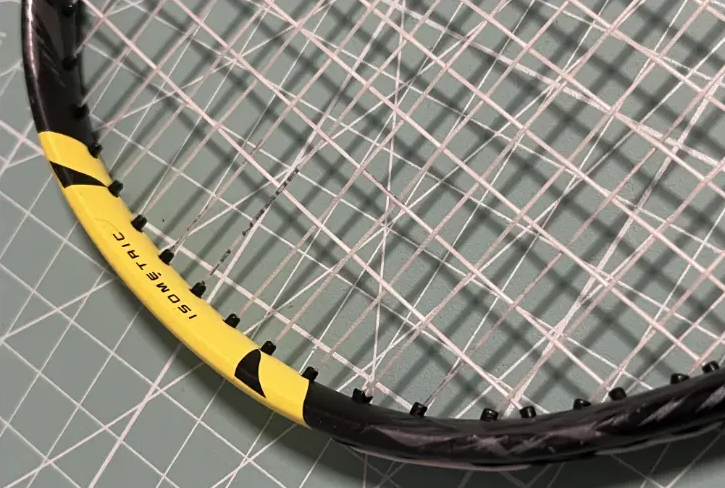
When I tried the 1000z at the time, while I knew it was a good product, it was different than what I would expect from a green factory flagship shooter. Now it’s the 1000t’s turn, and when my expectations go back to the level of a mid to high end one, I feel right at home. That’s when I’ll be able to better enjoy what it’s built for in terms of speed. It’s still very fast, and because of the little bit of elasticity that’s been neutered in conjunction with a little bit of stiffness, there’s a little bit more “wood” in the feedback, which gives me a little bit more confidence when I need to flick the ball, and it feels a little bit crisper on the ball. Speaking only for myself, with this center stick and the retention of the E.B. CAP plus, it seems that the 1000t gives me a more consistent rhythm on flat shots.

Of course, as I said earlier, I don’t feel that it’s a small frame, so for incoming shots that aren’t suitable for power handling or have a low takeaway point, it’s also quite easy to take advantage of its high forgiveness and moderate unloading feel to soft block and roll back and forth to a small shot near the net, and the 1000t gives the user a good level of confidence in using it to deal with a wide range of shots in a wider variety of ways.

The feel of the racket’s defense is a little worse than the 1000Z, just a little less flexible, requiring more power on the backhand and underhand release. However, it is still at a good level, during the trial period, due to the consistent level of my partner, I often had to deal with double-pressure opponents at the back of the mixed doubles court, while with the 1000T in hand, I was still able to top out the backcourt with a high ball to bring the situation back to an even balance when faced with an intentional push from both sides of the line.
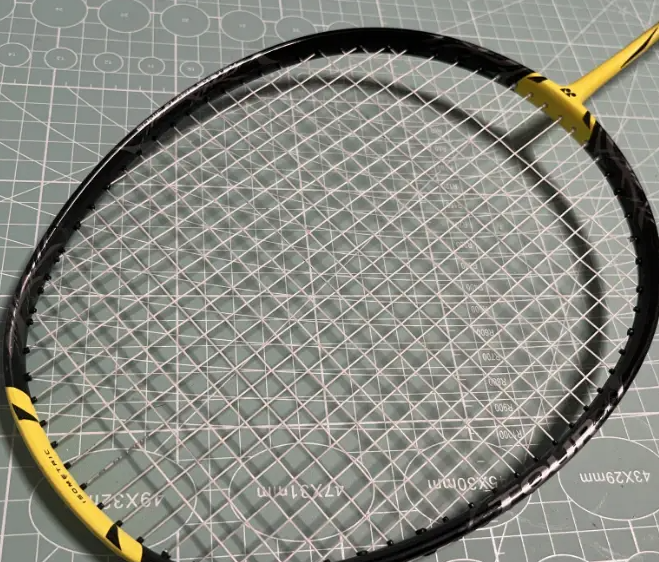
On the offensive side, the 1000t is no less impressive, with its own balance of consistency and ball speed per downward shot in place, with a more solid feel out of the shot, but not an alternating pattern. While the 1000z isn’t a powerful racquet either, even when viewed in the NANOFLARE lineup, the upper limit of single-shot offensive effectiveness still isn’t as high as the 800, but when you look at the overall scoring efficiency, the 1000z at least ensures that you’ll still be able to hit relatively threatening shots by the time you run out of steam at the end of the set. Although the quality of the 1000T’s kills is only a little less elastic than the 1000Z’s, after stretching out the time of the match, I feel that I will be slightly more consumed by playing offense with the 1000T.
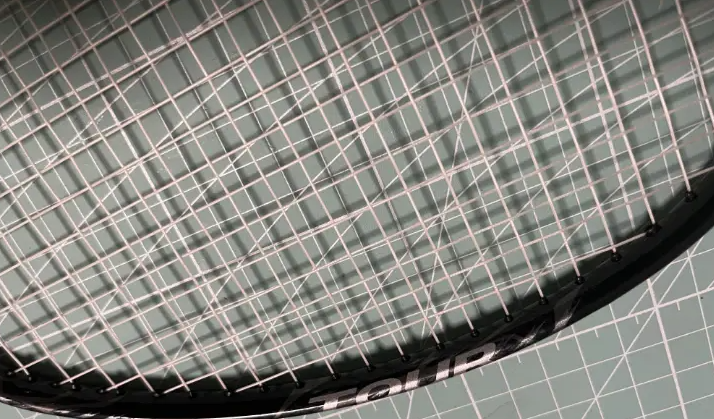
I kind of like this racquet as well, but I looked through the gear library and the racquet really doesn’t rate very high. I borrowed this racquet from a friend, and according to him, recovered it for a little more than the 11t, and it’s going to be six. If I were to face the situation of having to buy a tour, I would be willing to spend more than 11t to get 1000t, perhaps it is born to be more favorable to the speed racket, after all, it gives me a good competitive experience really let me have nothing to worry about. The conversion should have been the same, 80% performance, 60% off the price, acceptable.


